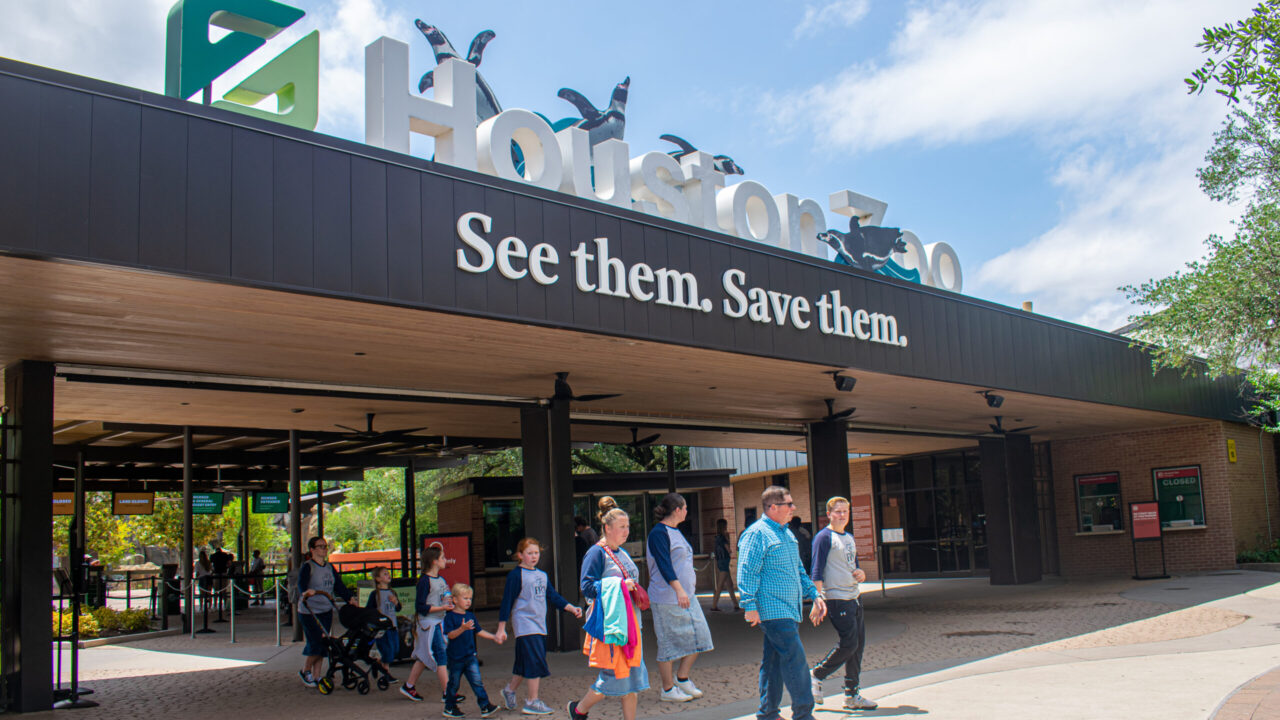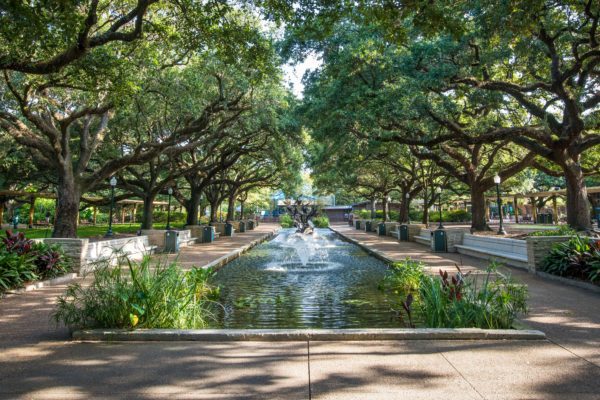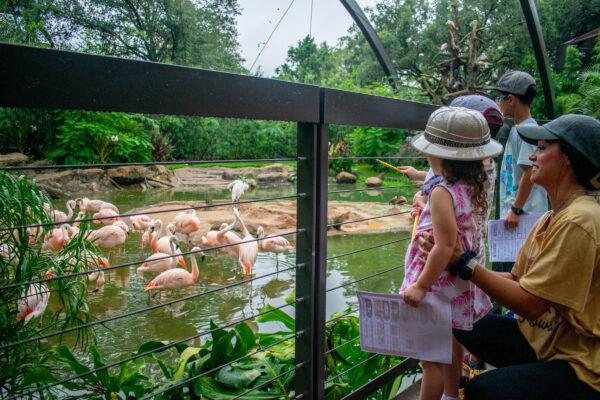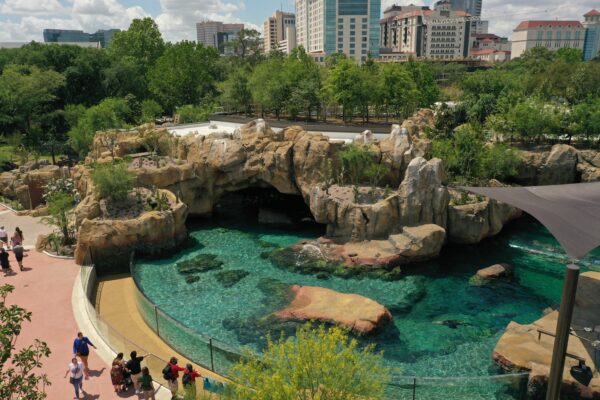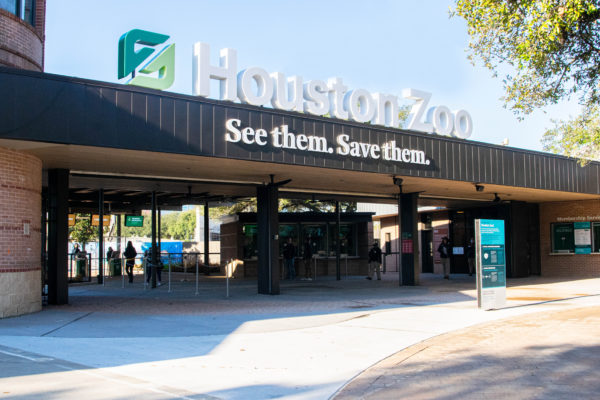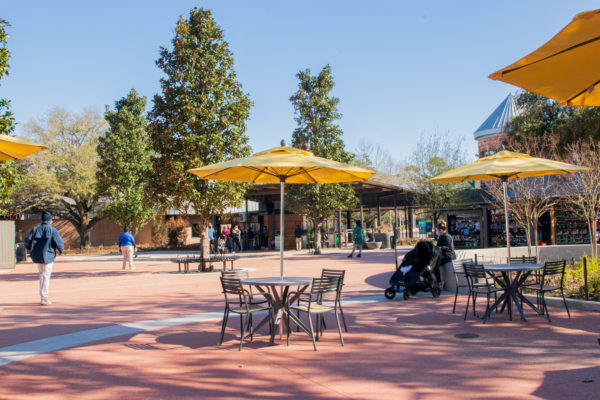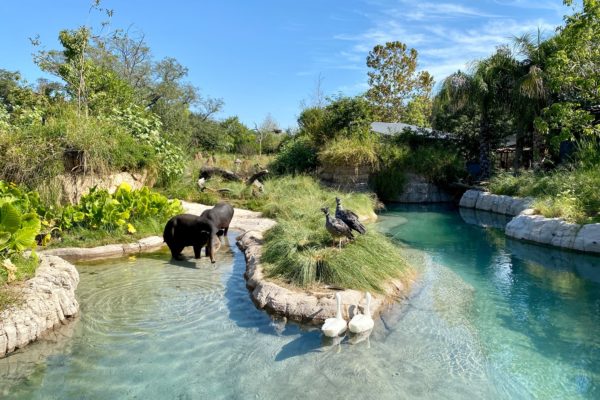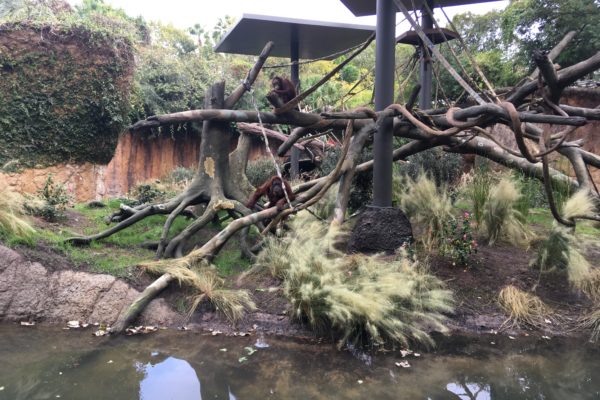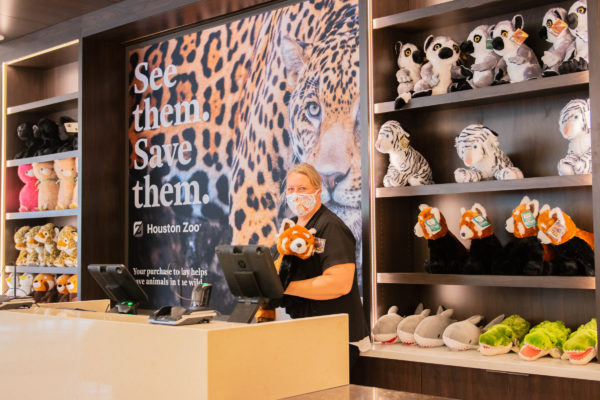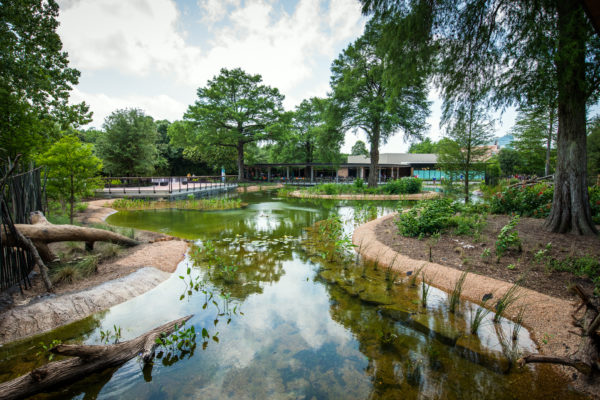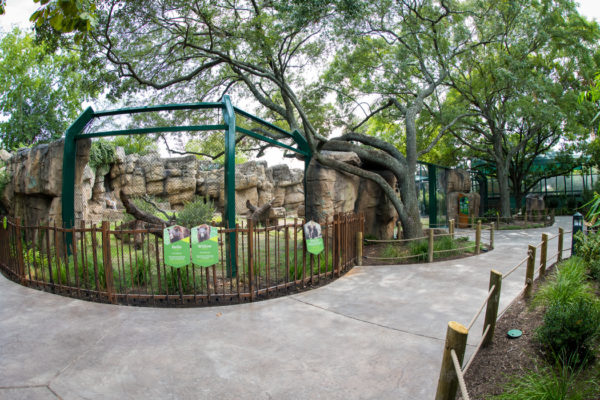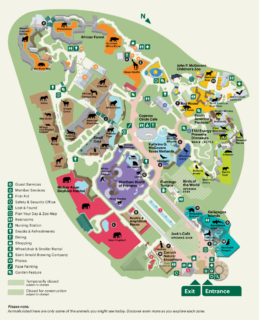 Over the years, you’ve watched your Houston Zoo undergo enormous changes and growth. We completed the most dramatic transformation in our history with our brand-new exhibit, Galápagos Islands, which opened in April 2023.
Over the years, you’ve watched your Houston Zoo undergo enormous changes and growth. We completed the most dramatic transformation in our history with our brand-new exhibit, Galápagos Islands, which opened in April 2023.
We are redefining what a zoo can be with beautiful and immersive habitats, compelling guest experiences, and an unyielding commitment to saving wildlife.
To create these new spaces, our construction projects may temporarily shift pathways, close buildings and move some animals to new habitats. During this process, the Zoo is working diligently to minimize impacts, while continuing to maintain the best experience possible for both guests and our animals.
Read more below!
Current Projects:
-
![]()
Jack’s Café & Reflections Event Hall and TerraceOpening Summer 2025
-
![]()
Colonnade Construction Through June 2025
Jack’s Café, opening in Summer 2025, is a brand-new guest experience at the entrance of Houston Zoo. Since 2018, the Zoo has been transforming the 102-year-old cultural icon, and this is just the next step in the improvements. Located on the site of the former sea lion habitat, McGovern Mammal Marina, Jack’s Café will serve guests a variety of tasty treats and delicious delicacies, as well as provide seating for 165, and family restrooms and nursing facilities. Jack’s Café is named in honor of longtime Zoo patron, John P. McGovern, affectionally called “Jack” by all who loved him. Dr. McGovern and his wife, Kathrine G. McGovern, were transformational supporters of Houston Zoo for decades and their impact can be seen throughout the 55-acre campus.
On the second floor, nestled between the canopies of the heritage live oaks is a large event space that overlooks the new Galápagos Islands exhibit and the historic Reflection Pool. John P. and Kathrine G. McGovern Reflections Event Hall and Terrace is 4,286 square feet of special event space and next summer, partygoers will be able to reserve the private indoor-outdoor space for seated events for up to 150 people and cocktail-style events for up to 300 people.
To support the Zoo’s mission for animal conservation, the entire building’s exterior glazing will be equipped with bird-friendly glass to protect the local wildlife and habitat in Houston, and an 18,000-gallon rainwater harvesting system will collect rainwater from the building’s roof to irrigate the surrounding landscape. To keep waste of out landfills and protect wildlife habitat, Jack’s Café will compost food scraps from both back-of-house and guest dining areas. Jack’s Café will serve not only as a much-needed amenity near the Zoo entry but also as a building that speaks directly to the Zoo’s commitment to the environment and to inspiring actions to save wildlife. Targeting LEED Gold certification and 4 Star Green Restaurant Certification, the building seeks to conserve our natural resources and reduce the Zoo’s carbon footprint through efficient operations, rainwater collection, and the use of durable, low-carbon building materials. The structure will be made primarily of sustainably harvested timber, a material with a lower overall carbon footprint when compared to concrete or steel.
Starting Monday, March 24, the pathway to the right of Reflection Pool, next to Flamingo Terrace and Birds of the World is closed, along with Reflection Pool. Don’t worry, your favorite animals are still accessible! To visit them, simply follow the detour signs through the Zoo.
Behind the construction fence, we’re restoring the historical colonnade to its original mid-century modern design! Built in 1951, this structure embodies the sleek, minimalist style of mid-century architecture with its clean lines and timeless elegance. Our dedicated crews will be removing the colorful tiles and metalwork added in the early 2000s, resurfacing the pillars, and ensuring the roof drains rainwater effectively.
Completed Projects:
-
![]()
Birds of the WorldOpened August 2024
-
![]()
Galápagos IslandsOpened April 2023
-
![]()
Renovated Main EntranceOpened January 2021
-
![]()
McGovern PlazaOpened January 2021
-
![outdoor mixed species habitat in South America's Pantanal]()
South America's Pantanal Opened October 2020
-
![]()
Orangutan Exhibit Renovation Opened November 2020
-
![]()
Zoo StoreOpened June 2020
-
![]()
Kathrine G. McGovern Texas WetlandsOpened May 2019
-
![outside view of Cypress Circle Cafe restaurant]()
Cypress Circle CaféOpened November 2018
-
![]()
Hamill Foundation Bear ExhibitOpened September 2018
Birds of the World is opened on August 30, 2024 and includes three aviaries, each with a specific habitat: African Savanna, North American Woodlands, and South American Wetlands.
A first-of-its-kind exhibit starring the landscape and wildlife that made history, plus enhancements to the Houston Zoo’s main entry. No place better illustrates the wonder of unique species, the delicate balance of ecosystems, or the pressing need for conservation action than the Galápagos Islands. This exhibit will immerse visitors in the Islands’ starkly beautiful environment; highlight the Zoo’s ongoing field work with giant tortoises, birds, and marine animals; and serve as a jumping-off point for educational experiences, including eco-travel.
The Zoo’s main entrance is new and improved and reopened officially in January 2021. This is part of the construction plan for Galápagos Islands, which is set to open for the Houston Zoo’s 100th anniversary in 2022.
This new plaza greets guests upon entering the Zoo and was designed with plenty of seating areas. This is part of the construction plan for Galápagos Islands, which opened in April 2023.
South America’s Pantanal allows guests to explore the tropical wetlands of Brazil right here at the Houston Zoo. The lush habitat highlights animals we are protecting in the wild, including giant anteaters, tapirs, and more. Partnered with on-the-ground conservationists, the Zoo offers visitors the chance to see these animals in an immersive and engaging trail. As guests enter South America’s Pantanal, they will encounter a set of rustic buildings, set on piers, evoking the eco-lodges that can be found alongside the rivers and streams in the Northern Pantanal region. The nature tourism these lodges support is one of the important ways this vital landscape and unparalleled wildlife assemblage is being protected.
In 2020, the Houston Zoo’s orangutan habitat got an extreme makeover! The orangutans have an all-new climbing structure, more shade, and a beach for the turtles who live in the moat surrounding the orangutan habitat.
Our Zoo Store has been completely remodeled and has ample room to showcase the latest Houston Zoo swag including T-shirts, caps, mugs, and more.
Even better, guests can now purchase Zoo Store items online.
The Texas Wetlands brings together three native Texas species—bald eagles, whooping cranes, and American alligators—in a lush wetland habitat. Thanks to the Endangered Species Act and the efforts of Texans, these three species, once close to extinction, now thrive in the Lone Star State.
The fully re-imagined Cypress Circle Café, in the heart of the Zoo, opened just in time for TXU Energy Presents Zoo Lights in November 2018. This conscientious café focuses on providing locally sourced, sustainable fare. Guests can see signature pizzas pass through pizza ovens and watch their seasonal bowl be created in front of them. Cypress Circle Café also overlooks the Kathrine G. McGovern Texas Wetlands and boasts stunning views of the exhibit.
The Hamill Foundation Black Bear Exhibit was the first project to be completed thanks to generous donor support of the Zoo’s Keeping Our World Wild centennial capital campaign. This expansion more than tripled the space for black bears Belle and Willow to explore. The expanded habitat was designed to give the bears the highest quality of life and includes engaging features throughout like a revamped water feature, specially created climbing structures, and ample shade.
Retired Exhibits:
Carruth Natural Encounters - Closed in 2025
With over 60 years of memories, the Carruth Natural Encounters building has been a significant part of the Zoo’s history. After careful consideration and extensive evaluations by our animal care and engineering teams, the Zoo closed the building on Monday, March 24. The building’s aging infrastructure no longer meets the needs of our animals or the expectations of our guests.
Fischer Bird Garden - Closed in 2020
KIPP Aquarium - Closed in 2020
The Zoo began construction on the Galápagos Islands habitat in 2020. To make room for this exciting new habitat, Kipp Aquarium closed to the public in Spring of 2020. While our Houston Zoo will no longer have a stand-alone aquarium, we will still feature many aquatic animals and habitats throughout the Zoo.
Tropical Bird House - Closed in 2020
Additional Information
By 2022, nearly half of Houston Zoo’s acreage will be redeveloped into experiential zones that highlight wildlife and ecosystems found in Texas and around the world. With conservation messaging integrated throughout these zones, guests will leave the Zoo inspired to take action to save animals in the wild.
